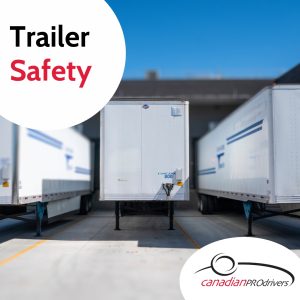
Connections are crucial, especially when attaching a trailer to any fleet vehicle like a truck, van or car. Once the link has been made, drivers need to circle the vehicle and conduct a thorough inspection. Here are a few steps to help drivers in the examination:
- Lights Under Scrutiny: Begin your probe by examining the trailer lights. Any cracked or broken lenses could lead to a dim journey.
- Tire Tread Reconnaissance: Tire treads tell tales of wear and tear. Inspect closely, ensuring they’re properly inflated and ready to roll.
- Chain Clues Uncovered: Look out for any signs of damage, like flat spots or weakened links. When inspecting, check for two strong safety chains!
- Hitch and Ball Inspection: Verify the hitch and trailer ball – they must be the right size and firmly attached.
- Trailer and Vehicle Bonding: Hook it up to the hitch, secure the electrical ties, and fasten every connection.
- Functionality Trials: Start the engine, activate those headlights, and unleash the four-way flashers. Then, walk around your vehicle to ensure all headlights, running lights, turn signals, and brake lights are working properly.
- Brake Investigation: Put them to the test – both the vehicles and the trailers, if your trailer has one! Brakes in good working condition should have a foot pedal that feels firm throughout your trip and they shouldn’t feel spongy!
- Load Balancing Art: Load the trailer like a pro. Aim for balance and stability. Load around 55% towards the hitch end for a smooth sail.
Remember, for those seeking guidance and training on trailer attachment to various types of vehicles, the Canadian Pro Drivers offers both experience and expertise in this field. We provide proper training to ensure you’re well-prepared for safe towing adventures.
